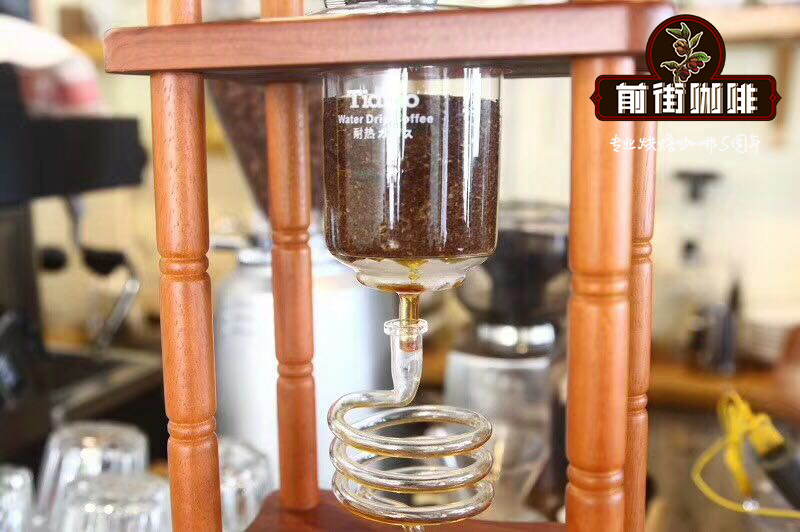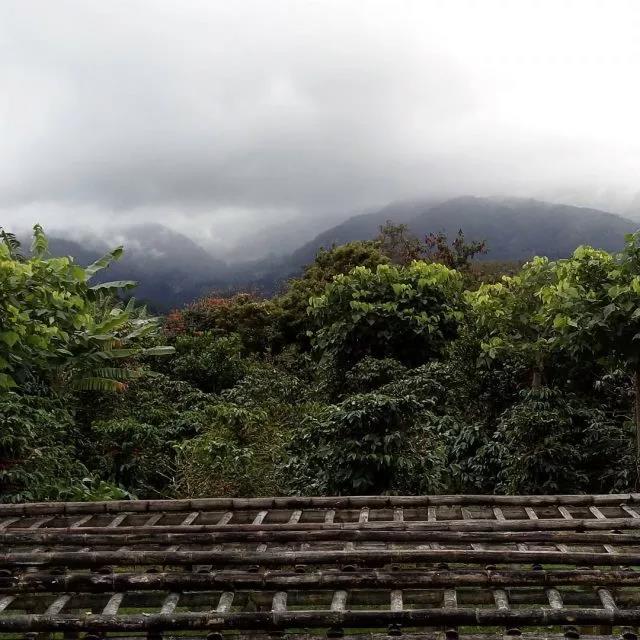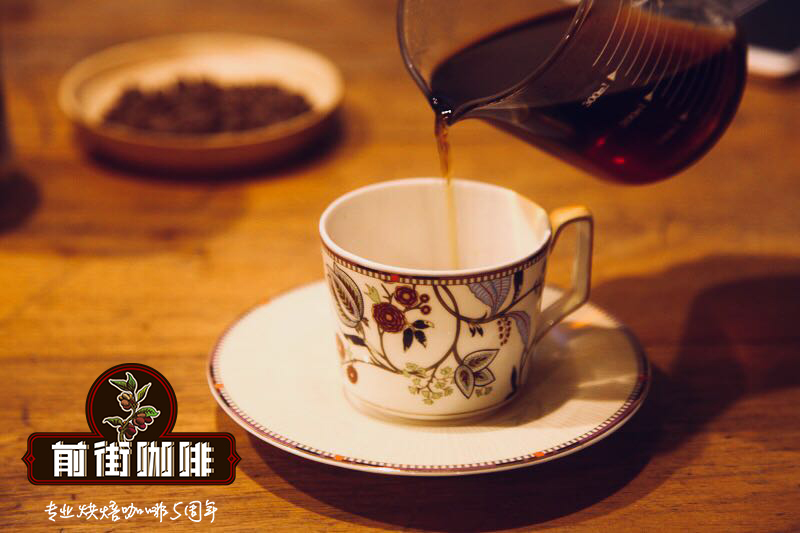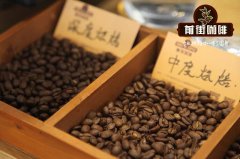Characteristics of Santa Barbara Coffee producing area in Honduras

Professional coffee knowledge exchange more coffee bean information please follow the coffee workshop (Wechat official account cafe_style)
Honduras Coffee Bean Saakastoumei Parainema species Honduras Familia Sagastume Parainema
[country] Honduras [production area] Santa Barbara [cooperative] San Vincent treatment plant [producer] Saakastoume family [treatment] washing [variety] Parainema
[baking degree] very shallow baking [flavor tonality] floral / orange / vanilla / maple syrup / holy tomato [flavor description] bright floral / orange aroma, syrup-like sweet taste, delicate acidity and soft finish.
When it comes to coffee from Central America, friends who are familiar with coffee may immediately think of coffee-producing countries such as Guatemala, Costa Rica and Panama. But El Salvador, Nicaragua and Honduras are also big coffee producers in Central America.
But now the coffee industry in Honduras is quietly showing its edge, and its coffee beans have reached the level of boutique coffee.
Geographical location

Honduras is located in the north of Central America, facing the Caribbean Sea to the north, the Gulf of Fonseca in the Pacific Ocean to the south, Nicaragua and El Salvador to the east and south, and Guatemala to the west, mostly mountains and plateaus. It has a tropical climate, mild temperature and abundant rainfall, so it is an ideal place for coffee growth.
Until 1975, when Brazil was badly hit by the frost, coffee production plummeted, while Honduras took the opportunity to take advantage of the surge in coffee production from 500000 bags to 1.8 million bags, and was looted. It was only after that that coffee production in Honduras really developed.
Producing area distribution

In Honduras, coffee-producing areas are divided into six major areas, spread to the west and south, namely Santa Barbara (Santa Barbara), El Paraiso (El Paraiso), Copan (Copan), La Paz (La Paz) and Comayagua (Olan Mound), with an average planting height of more than 1100 meters above sea level. Coffee varieties are Arabica, 69% are HG "High and low Coffee", 12% are SHG "Special Highland Coffee" and 19% are CS. There are mainly Typic, Bourbon, Caturra, Villa Sarch and Lempira.
So there are two kinds of very good quality coffee produced in Honduras, one is "Highland Coffee", which grows at an altitude of 1000 Mel / 1500 Michael, and the other is "selected Highland Coffee", which represents the highest level of Honduras, which is grown at an altitude of 1500 Mel / 2000 Michael. Most of it is exported to the United States and Germany.
Flavor and taste

The flavor is quite good, rich and mellow, suitable for mixed drinking. Honduran coffee beans, the most obvious feeling is relatively soft and thick, occasionally a little sweet; low acidity, in the coffee producing areas of Central America, Honduran coffee is famous for its black berry flavor and caramel sweet, medium mellow thickness, and even black pepper and cut tobacco flavor in some batches of coffee.
Qianjie coffee is suggested to be roasted.
Honduras is a hard bean, medium water raw beans, and the size of the beans is relatively uniform, we have a general range, to develop the mellow flavor of Honduras, hard beans need to be baked to more than medium, determine the approximate range, we designed a medium, medium depth, second burst curve.
Qianjie coffee is recommended to record the data before roasting, the water content, density, origin, treatment method, ambient temperature and humidity in the baking room, etc., and plan your baking curve. Recording the chemical and physical changes during the baking process will help you better understand the final baking results and help improve the baking curve.
Treatment method

The granules of coffee beans in Honduras are large in shape, uniform in size and glossy in color. In order to facilitate harvesting, farmers will trim the coffee trees to no more than 150 centimeters, because if they grow too high, they have to set up ladders to pick, which is not only time-consuming, but also may damage the trees by bending branches. As the ripening period of each fruit of coffee beans is different, in order to maintain the good quality of coffee beans, it is necessary to pick them manually, and then select the ripe fruits. For coffee fruits of the same branch, it often takes several weeks to pick them all.
High-quality coffee in Honduras uses water washing to deal with coffee beans, usually after soaking, when the defective fruit will surface, it can be discarded first. Then put the good fruit into the fruit peeling machine and peel off the peel with the rotating force of the machine. Peeled fruits are screened by machines to select fruits of high quality. Usually the bigger the fruit, the better the maturity. Coffee in Honduras is dried in the sun, so there is always a hint of fruit in the taste.
Honduran coffee can lead to multiple levels of flavor depending on the degree of roasting. Moderate baking can maximize the sweetness of beans, while deep baking increases bitterness, but sweetness does not disappear. Generally speaking, medium roasting has the best taste and rich and unique aroma, which is favored by coffee lovers in Honduras.
END
Important Notice :
前街咖啡 FrontStreet Coffee has moved to new addredd:
FrontStreet Coffee Address: 315,Donghua East Road,GuangZhou
Tel:020 38364473
- Prev

Brief introduction of Coffee Bean Manor in Honduras-characteristics of El Puente_ Honduran Coffee
Professional coffee knowledge exchange more coffee bean information please follow Coffee Workshop (Wechat official account cafe_style) Don Fabio Caballero is a second-generation coffee farmer in Honduras and one of the pioneers of local coffee growers. His land has been distributed to his next generation, mainly the current female farmer Marysabel Caballero and her husband Moises Herra.
- Next

Honduras-Markara Coffee-Gellen / thatched Manor _ how to bake Honduran Coffee
Professional coffee knowledge exchange more coffee bean information Please pay attention to the coffee workshop (Wechat official account cafe_style) Coffee in Honduras] Honduras is located in the north of Central America, with a tropical climate, mild temperature and abundant rainfall, it is an ideal place for coffee growth. The terrain is mostly mountainous and plateau, so it gives birth to a wide range of coffee beans, from low acid, nutty, sweet to
Related
- Does Rose Summer choose Blue, Green or Red? Detailed explanation of Rose Summer Coffee plots and Classification in Panamanian Jade Manor
- What is the difference between the origin, producing area, processing plant, cooperative and manor of coffee beans?
- How fine does the espresso powder fit? how to grind the espresso?
- Sca coffee roasting degree color card coffee roasting degree 8 roasting color values what do you mean?
- The practice of lattes: how to make lattes at home
- Introduction to Indonesian Fine Coffee beans-- Java Coffee producing area of Indonesian Arabica Coffee
- How much will the flavor of light and medium roasted rose summer be expressed? What baking level is rose summer suitable for?
- Introduction to the characteristics of washing, sun-drying or wet-planing coffee commonly used in Mantenin, Indonesia
- Price characteristics of Arabica Coffee Bean Starbucks introduction to Manning Coffee Bean Taste producing area Variety Manor
- What is the authentic Yega flavor? What are the flavor characteristics of the really excellent Yejasuffi coffee beans?

